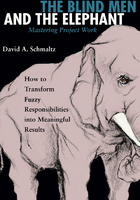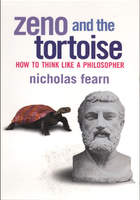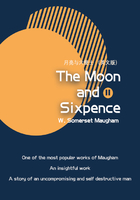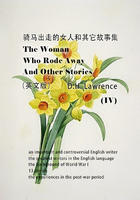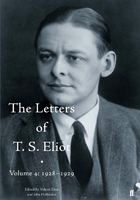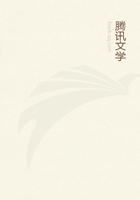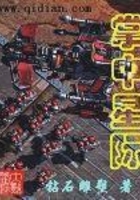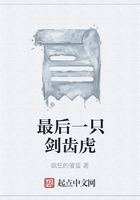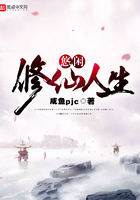acting on what matters.
There is depth in the question “How do I do this?“ that is worth exploring. The question is a defense against the action. It is a leap past the question of purpose, past the question of intentions, and past the drama of responsibility. The question “How?“—more than any other question— looks for the answer outside of us. It is an indirect expression of our doubts. . . .
“Choosing Freedom, Service, and Adventure,“
—Peter Block, Stewardship, (p. 234)
There is something in the persistent question How? that expresses each person's struggle between having confidence in their capacity to live a life of purpose and yielding to the daily demands of being practical. It is entirely possible to spend our days engaged in activities that work well for us and achieve our objectives, and still wonder whether we are really making a difference in the world. My premise is that this culture, and we as members of it, have yielded too easily to what is doable and practical and popular. In the process we have sacrificed the pursuit of what is in our hearts. We find ourselves giving in to our doubts, and settling for what we know how to do, or can soon learn how to do, instead of pursuing what most matters to us and living with the adventure and anxiety that this requires.
The idea that asking how to do something may be an obstacle rather than an enabler ended my 1993 book, Stewardship. In the final chapter, there is the suggestion that How? is a symbol of our caution and reinforces the belief that, no matter what the question, there is an answer out there that I need and will make the difference. I pick How? as a symbol simply because it is far and away the most common question I hear. It has always struck me that I can write or speak the most radical thoughts imaginable. I can advocate revolution, the end of leadership, the abolition of appraising each other, the empowerment of the least among us, the end of life on the planet as we know it, and no one ever argues with me. The only questions I hear are “How do you get there from here? Where has this worked? What would it cost and what is the return on investment?“ This has led me to the belief that the questions about How? are more interesting than any answer to them might be. They stand for some deeper concerns. So in this book, the starting point is to question the questions.
What Is Worth Doing
We often avoid the question of whether something is worth doing by going straight to the question “How do we do it?“ In fact, when we believe that something is definitely not worth doing, we are particularly eager to start asking How? We can look at what is worth doing at many different levels: As an individual I can wonder whether I can be myself and do what I want and still make a living. For an organization I can ask for whose sake does this organization exist and does it exist for any larger purpose than to survive and be economically successful? As a society, have we replaced a sense of community and civic engagement for economic well being and the pursuit of our private ambition?
Too often when a discussion is dominated by questions of How? we risk overvaluing what is practical and doable and postpone the questions of larger purpose and collective well being. With the question How? we risk aspiring to goals that are defined for us by the culture and by our institutions, at the expense of pursuing purposes and intentions that arise from within ourselves.
If we were really committed to the pursuit of what matters, we might be well served to hold a moratorium on the question How? There is an image I first heard from Jim Walker, a change-oriented executive and good soul, who was put in charge of a struggling AT&T business some years ago. He used to ask, “What do you do when you find yourself in a hole?“ His answer was, “The first thing you do is stop digging.“ That stuck with me. Most of the time, when something I am trying does not work, I simply try harder. If I am trying to control a business, a project, or a relationship and it is failing, then I doggedly do more of what is not working.
If we could agree that for six months we would not ask How? , something in our lives, our institutions, and our culture might shift for the better. It would force us to engage in conversations about why we do what we do, as individuals and as institutions. It would create the space for longer discussions about purpose, about what is worth doing. It would refocus our attention on deciding what is the right question, rather than what is the right answer.
It would also force us to act as if we already knew how—we just have to figure out what is worth doing. It would give priority to aim over speed. At some point we would either find the right question or grow weary of its pursuit, and we would be pulled into meaningful action, despite our uncertainty and our caution about being wrong. It would support us in acting now, rather than waiting until the timing was right, and the world was ready for us. We might put aside our wish for safety and instead view our life as a purpose-filled experiment whose intention is more for learning than for achieving and more for relationship than for power, speed, or efficiency.
This might elevate the state of not knowing to being an acceptable condition of our existence rather than a problem to be solved, and we might realize that real service and contribution come more from the choice of a worthy destination than from limiting ourselves to engaging in what we know will work.
The How? of Why
This book is a discussion of what it takes to live a life in pursuit of what matters. It is an effort to ensure that what we are effective and good at doing is worth doing. The book also raises the question What are we waiting for? By this time we have all been immersed in visioning, guided imagination, and becoming the possibility. We have been mentored and coached and been a mentor and coach to others. So, if we are waiting for more knowledge, more skills, more support from the world around us, we are waiting too long.
In the face of the struggle to know what matters to us, and to act on it, we have to be gentle with ourselves. We live in a culture that lavishes all of its rewards on what works, a culture that seems to value what works more than it values what matters. I am using the phrase “what works“ to capture our love of practicality and our attraction to what is concrete and measurable. The phrase “what matters“ is shorthand for our capacity to dream, to reclaim our freedom, to be idealistic, and to give our lives to those things which are vague, hard to measure, and invisible. Now, you might say that what actually matters most to you are those things that are measurable, concrete, and do in fact “work.“ I would not argue with you, but would urge you to explore how focusing too quickly and exclusively on what works can have the effect of distracting us from our deeper purpose and sense of fully living the life we have in mind. In other words, my wish is that we exchange what we know how to do for what means most to us.
How? The Statement
In any of its hundreds of variations when we ask How? we are really making a statement: What we lack is the right tool. The right methodology. We are mechanics who cannot find the right wrench. The question How? not only expresses doubt about whether we know enough and are enough; it also affirms the belief that what works is the defining question, a major source of our identity.
The question declares that we, as a culture, and I, as a human being, are fundamentally about getting things done.
If something has no utility, if it does not work, then we consider that a limitation. In fact, talk, dreams, reflections, feelings, and other aspects of who we are as humans are considered lost production in many organizations.
Now, this is not really an argument against the question How? Rather it is an argument that there are more important questions, and How? should be asked later rather than sooner. We are at times so eager to get practical right away that we set limits on ourselves. We become imprisoned in our belief that we don't know how and therefore need to keep asking the question. Also, in our search for tools, we become what we seek: a tool. We reduce ourselves to being primarily pragmatic and utilitarian.
How Many Answers Do We Need?
What is really interesting about How? is that we are asking a question to which we already have the answer. In fact, we have a large group of answers because we have been asking How? for a long time. We have been collecting answers for years, and yet we still keep asking the question.
We are on a treadmill, because although we keep asking How? , we have to wonder what to do with the answers we are getting. No matter how many answers we get, we often decide not to act on them, and when we do act on an answer, what have we got? The fault is in the nature of the question.
Each time we try to act on an answer to the question How?, we will fail because, first, the question wasn't the right question, and second, the answer comes out of someone else's experience, not our own. It is difficult to live another's answer, regardless of the amount of goodwill with which it is offered.
Control in the Balance
One way of understanding the meaning of the question How? is to consider it as an expression of our wish for control and predictability. This is the appeal of the question. We think that we can find control and predictability in the mastery, the knowing, and the certainty of doing something the right way. Not our way, not one way, but the right way. We think there is a right way, that someone else knows what it is, and that it is our job to figure it out. And the world conspires with this illusion, for it wants to sell us an answer. We ask “How?“ and the world answers, “This way.“
While there are many positive values to our desire for concrete action and results, it does not ensure that what we are doing serves our own larger purpose or acts to create a world that we can believe in—in other words, a world that matters. Thus, the pursuit of How? can act to avoid more important questions, such as whether what we are doing is important to us, as opposed to being important to them. While we do create value when we pursue what is important to others, it is different from doing what is important to us.
If knowing How? offers us the possibility of more control and predictability, then we may have to sacrifice them to pursue what matters. The choice to worry about why we are doing something more than how we do something is risky business. It is risky for us as individuals, for our organizations, and for society.
Choosing to act on “what matters“ is the choice to live a passionate existence, which is anything but controlled and predictable.
Acting on what matters is, ultimately, a political stance, one whereby we declare we are accountable for the world around us and are willing to pursue what we define as important, independent of whether it is in demand, or has market value.
Giving priority to what matters is the path of risk and adventure, but I also believe that the institutions and culture that surround us are waiting for us to transform them into a fuller expression of our own desires. We have the potential to reclaim and experience our freedom and put our helplessness behind us. We have the capacity to experience an intimate connection with other people and with all we come in contact with, rather than feeling that we exist in relationships born of barter and instrumentality. We also have the capacity and maturity to live a life of service and engagement, rather than the primary pursuit of entitlement and interests that focus on ourselves.
But this is getting ahead of the story. I want to begin with a discussion of the wider implications of attending so doggedly to what works and how to do things. What is at stake is not only the quality of our own experience, but also the quality of our institutions and our communities. The primary concern here is the world that we create collectively, for when we commit to bringing our deepest selves to the table, we are transformed by the act of creating something together that we cannot create alone. Therefore any discussion of acting on what matters has to include a discussion of our organizations and our communities. It is in these settings where we will find out who we are. If we can create alternative ways of being when we are organized for a purpose, this will impact the way we manage ourselves in all other aspects of our lives.
What Does Matter
The intent of this book is not to try to convince you about the substance of what matters. It is primarily a discussion of what is required of us if we are to act on what we care about. It helps to differentiate between our beliefs about what makes for effective people and organizations, and the way we approach the realization of those beliefs. This book is about the means of acting on our beliefs. It is about how to realize whatever model of effective organizations we hold to be true.
Each of us has developed a model of what will make for a better world, or at least a better organization. Here are some examples:
Vision, clear purpose, and common goals are essential. We live into the future that we imagine, and the task is to keep focused on that vision and let that be the context for all our actions.
We need effective tools and problem-solving skills. When we have the tools, we have the capacity to bring our intentions into being.
Participation and empowerment are key. So are high involvement and high collaboration. Workers will perform best when they have influence over their workplace and act as owners.
We need flexible structures and sophisticated information systems to support work processes that fit the task and mission. More agile, cross-functional structures plus easy access to the right information at the right moment create the capacity to meet shifting demands quickly.
Leadership is the key. We need intuitive, service-oriented, visionary leaders to set the tone and provide the example for those they lead. They must be role models for the change they want to see.
Effective personal skills, good work habits, and behavior that is self-motivating as well as supportive of others are needed. Behavioral skills and relevant competencies make the difference.
We need learning organizations, places where people are supported to fail, to question their mental models, to experiment with new ways.
Organizations are places to live out our spiritual and human values. We need to bring our whole selves to work, where we create an ethical environment that values people as much as results.
These models have all been popular in recent years. What is interesting is that they are all true. Period. Each is a valid expression of what makes for more effective workplaces and lives. They are all important, and we can cite examples where each of these stances has made a difference. So they are in this way all valid statements about what we want to change in the world, at least in the realm of organizational life. Even though the approaches are quite different, there is no point arguing about the value of one over another. If we want to debate which approach is better, then we are just looking to control what happens, we are not looking for insight. In this way, the differences among them do not really matter. Most any path will do.
What does matter is the way that we pursue any of these models. How we act to bring these models into the world takes us to a deeper level, which is a matter of our individual values. Each of us is drawn to a particular set of values that grow out of who we are. Living our values in the pursuit of our preferred organizational model is what matters most. If asked directly, each person resonates to a set of values in a unique way. Consider the words:
Love
Freedom
Compassion
Faith in a Supreme Being
Integrity
Equality
Collaboration
Justice
Reconciliation
Creativity
Care for the Next Generation
Values such as these are a deeper statement of what really matters to us. They are also what most profoundly connect us to one another and to the world we have created. They come from our own experience with life, especially our woundedness. In a sense,
I desire to create a world that will solve for others what I have struggled with so much for myself.
I would not write so much about freedom if I had not personally felt so constrained. What is interesting about values is that they are all true and noble. There is nothing to argue about here. I have never heard a human value that I didn't like. As with the models of organizational effectiveness, when people argue about “values“ it is a guise for seeking control, for imposing their beliefs upon others.
The View from Where We Are
The challenge of values is not to negotiate the importance of one over another, but to act on them. The quality of feeling alive comes when we act on our values, and find a way to bring our own model or strategy for better organizations and communities into the world.
What I want to explore is what is required from us in order to do this. This book weaves together several parallel lines of thought. It is a mixture of ideas about what we are up against and what is required of us to act on our values. At times we have oversold the models and the values, and undersold the difficulty of getting there. I want explore why it is so hard to embody or bring into being what we know to be true. Here is a brief outline of the way this discussion unfolds.
Part 1 the question
The first three chapters are about the importance of getting the question right. A major obstacle to acting on what matters is asking questions of methodology too quickly. I have symbolized this by obsessively focusing on the question How? It's not that our pragmatic How? questions are not valid. It's just that when they define the debate we are deflected from considering our deeper values––plus asking How? is a favorite defense against taking action. The pursuit of meaning has been written about a great deal, and sometimes we think that knowing what matters is enough. That our dreams will come true if we just continue to hold them. It is not always so. What we may require is a profoundly different way of seeing and acting on the possibilities. Getting the question right is the first step.
Part 2 three qualities
Chapters 4, 5, and 6 explore three aspects of the human condition that support our pursuit of what matters: idealism, intimacy, and depth. These qualities are portrayed as preconditions for acting on our values, intentions, desires. They represent a shift in our mindset, they are the groundwork from which we rise to action. They are some of the hard work, exercise, and diet that are required to live with the risks of pursuing what matters most to us. The underlying themes here are the power of the culture and the choice to reclaim our idealism in a materialistic environment, to reestablish an intimacy with what surrounds us, and to find depth in a world that is happy with a quick makeover.
Part 3 the requirements
Our culture is not organized to support idealistic, intimate, and deeper desires. It is organized to reinforce instrumental behavior. If we can understand the nature of the culture, we gain some choice over it. Part 3 takes the discussion of acting on what matters into the workplace. It expands the discussion from what matters to us as individuals to more collective concerns. It shifts our focus from what matters to me to what matters to us.
Part 4 social architecture
These final chapters dive deeper into what we are up against when we want to act on what matters in the collective and institutional arena. Part 4 begins with an in-depth exploration of the instrumentality of the culture, and the archetypes of engineer, economist, artist, and architect. The engineer and economist represent mindsets that dominate the culture. The mindset of the artist is increasingly absent in our workplaces. The mindset and role of the social architect is a way of integrating the gifts of the engineer, the economist, and the artist. The idea here is not to completely define the role or work of the social architect. Rather, social architecture is an image, a role for each of us to help create, for acting on what matters in concert with those around us.

